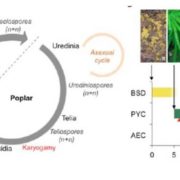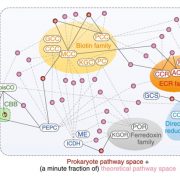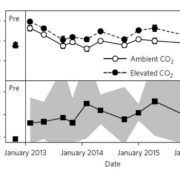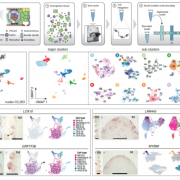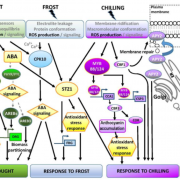Best of 2016: Top Topics in The Plant Cell journal
We’ve highlighted some of the Plant Cell papers that were widely shared, liked, blogged, retweeted and otherwise garnered high-levels of attention this year. Perhaps you can use some holiday-season quiet time to catch up on those you missed.
Reviews and Perspectives
Creating order from chaos: epigenome dynamics in plants with complex genomes http://www.plantcell.org/content/28/2/314
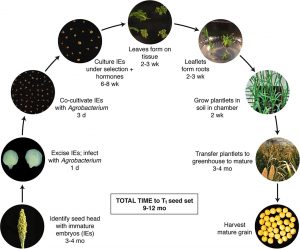 Advancing Crop Transformation in the Era of Genome Editing http://www.plantcell.org/content/28/7/1510
Advancing Crop Transformation in the Era of Genome Editing http://www.plantcell.org/content/28/7/1510
Growing Out of Stress: The Role of Cell- and Organ-scale Growth Control in Plant Water-stress Responses http://www.plantcell.org/content/28/8/1769
Breakthrough Reports
Transcript Abundance Explains mRNA Mobility Data in Arabidopsis thaliana http://www.plantcell.org/content/28/3/610
In Planta Single-Molecule Pull-down (SiMPull) Reveals Tetrameric Stoichiometry of HD-ZIPIII:LITTLE ZIPPER Complexes http://www.plantcell.org/content/28/8/1783
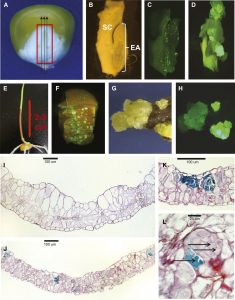 Morphogenic Regulators Baby boom and Wuschel Improve Monocot Transformation http://www.plantcell.org/content/28/9/1998
Morphogenic Regulators Baby boom and Wuschel Improve Monocot Transformation http://www.plantcell.org/content/28/9/1998
Large Scale Biology Articles
Time-Series Transcriptomics Reveals That AGAMOUS-LIKE22 Affects Primary Metabolism and Developmental Processes in Drought-Stressed Arabidopsis http://www.plantcell.org/content/28/2/345
An Indexed, Mapped Mutant Library Enables Reverse Genetics Studies of Biological Processes in Chlamydomonas reinhardtii http://www.plantcell.org/content/28/2/367
Local Auxin Biosynthesis Mediated by a YUCCA Flavin Monooxygenase Regulates Haustorium Development in the Parasitic Plant Phtheirospermum japonicum http://www.plantcell.org/content/28/8/1795
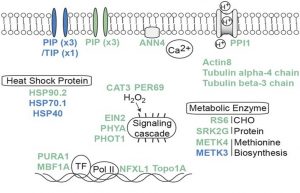 In Planta Determination of the mRNA-Binding Proteome of Arabidopsis Etiolated Seedlings http://www.plantcell.org/content/28/10/2435
In Planta Determination of the mRNA-Binding Proteome of Arabidopsis Etiolated Seedlings http://www.plantcell.org/content/28/10/2435
Draft Assembly of Elite Inbred Line PH207 Provides Insights into Genomic and Transcriptome Diversity in Maize http://www.plantcell.org/content/28/11/2700
Research Articles
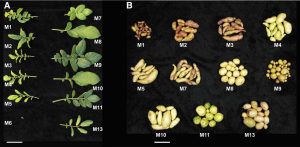 Genome Reduction Uncovers a Large Dispensable Genome and Adaptive Role for Copy Number Variation in Asexually Propagated Solanum tuberosum http://www.plantcell.org/content/28/2/388
Genome Reduction Uncovers a Large Dispensable Genome and Adaptive Role for Copy Number Variation in Asexually Propagated Solanum tuberosum http://www.plantcell.org/content/28/2/388
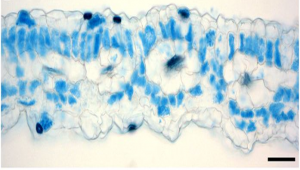 An Untranslated cis-Element Regulates the Accumulation of Multiple C4 Enzymes in Gynandropsis gynandra Mesophyll Cells http://www.plantcell.org/content/28/2/454
An Untranslated cis-Element Regulates the Accumulation of Multiple C4 Enzymes in Gynandropsis gynandra Mesophyll Cells http://www.plantcell.org/content/28/2/454
The Arabidopsis NRG2 Protein Mediates Nitrate Signaling and Interacts with and Regulates Key Nitrate Regulators http://www.plantcell.org/content/28/2/485
An Ancient Bacterial Signaling Pathway Controls Chloroplast Function to Regulate Growth and Development in Arabidopsis http://www.plantcell.org/content/28/3/661
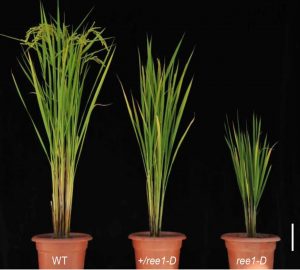 Rice HOX12 Regulates Panicle Exsertion by Directly Modulating the Expression of ELONGATED UPPERMOST INTERNODE1 http://www.plantcell.org/content/28/3/680
Rice HOX12 Regulates Panicle Exsertion by Directly Modulating the Expression of ELONGATED UPPERMOST INTERNODE1 http://www.plantcell.org/content/28/3/680
The RNA Polymerase II C-Terminal Domain Phosphatase-Like Protein FIERY2/CPL1 Interacts with eIF4AIII and Is Essential for Nonsense-Mediated mRNA Decay in Arabidopsis http://www.plantcell.org/content/28/3/770
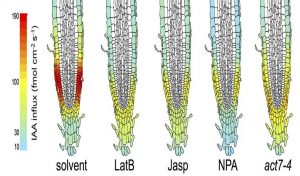 TWISTED DWARF1 Mediates the Action of Auxin Transport Inhibitors on Actin Cytoskeleton Dynamics http://www.plantcell.org/content/28/4/930
TWISTED DWARF1 Mediates the Action of Auxin Transport Inhibitors on Actin Cytoskeleton Dynamics http://www.plantcell.org/content/28/4/930
Crystal Structure of the GRAS Domain of SCARECROW-LIKE7 in Oryza sativa http://www.plantcell.org/content/28/5/1025
Dual and Opposing Roles of Xanthine Dehydrogenase in Defense-Associated Reactive Oxygen Species Metabolism in Arabidopsis http://www.plantcell.org/content/28/5/1108
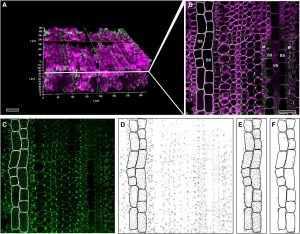 The Metabolite Pathway between Bundle Sheath and Mesophyll: Quantification of Plasmodesmata in Leaves of C3 and C4 Monocots http://www.plantcell.org/content/28/6/1461
The Metabolite Pathway between Bundle Sheath and Mesophyll: Quantification of Plasmodesmata in Leaves of C3 and C4 Monocots http://www.plantcell.org/content/28/6/1461
The Arabidopsis Malectin-Like/LRR-RLK IOS1 is Critical for BAK1-Dependent and BAK1-Independent Pattern-Triggered Immunity http://www.plantcell.org/content/28/7/1701
Rapid Evolution of Genomic Imprinting in Two Species of the Brassicaceae http://www.plantcell.org/content/28/8/1815
Regulation of Leaf Starch Degradation by Abscisic Acid Is Important for Osmotic Stress Tolerance in Plants http://www.plantcell.org/content/28/8/1860
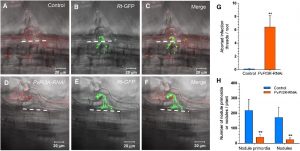 An Autophagy-Related Kinase is Essential for the Symbiotic Relationship Between Phaseolus vulgaris and Both Rhizobia and Arbuscular Mycorrhizal Fungi http://www.plantcell.org/content/28/9/2326
An Autophagy-Related Kinase is Essential for the Symbiotic Relationship Between Phaseolus vulgaris and Both Rhizobia and Arbuscular Mycorrhizal Fungi http://www.plantcell.org/content/28/9/2326
GAD1 Encodes a Secreted Peptide That Regulates Grain Number, Grain Length and Awn Development in Rice Domestication http://www.plantcell.org/content/28/10/2453
A Dominant Mutation in the HT1 Kinase Uncovers Roles of MAP Kinases and GHR1 in CO2-induced Stomatal Closure http://www.plantcell.org/content/28/10/2493
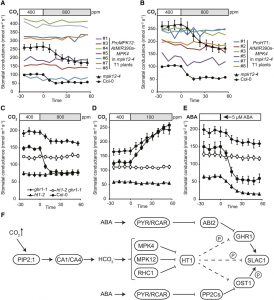 ABI5 Is a Regulator of Seed Maturation and Longevity in Legumes http://www.plantcell.org/content/28/11/2735
ABI5 Is a Regulator of Seed Maturation and Longevity in Legumes http://www.plantcell.org/content/28/11/2735
Epidermal Phytochrome B Inhibits Hypocotyl Negative Gravitropism Non-Cell-Autonomously http://www.plantcell.org/content/28/11/2770
Editorials, Letters to the Editor, Commentaries
The Plant Cell Begins Opt-in Publishing of Peer Review Reports http://www.plantcell.org/content/28/10/2343.full
A Proposal Regarding Best Practices for Validating the Identity of Genetic Stocks and the Effects of Genetic Variants http://www.plantcell.org/content/28/3/606.full
Ws-2 Introgression in a Proportion of Arabidopsis thaliana Col-0 Stock Seed Produces Specific Phenotypes and Highlights the Importance of Routine Genetic Verification http://www.plantcell.org/content/28/3/603
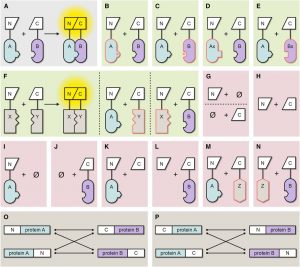 Lighting the Way to Protein-Protein Interactions: Recommendations on Best Practices for Bimolecular Fluorescence Complementation Analyses http://www.plantcell.org/content/28/5/1002.abstract
Lighting the Way to Protein-Protein Interactions: Recommendations on Best Practices for Bimolecular Fluorescence Complementation Analyses http://www.plantcell.org/content/28/5/1002.abstract
Are We There Yet? Reliably Estimating the Completeness of Plant Genome Sequences http://www.plantcell.org/content/28/8/1759
Founded in 1989, The Plant Cell publishes novel research of special significance in plant biology, especially in the areas of cellular biology, molecular biology, biochemistry, genetics, development, and evolution. The primary criteria for publication are that the article provides new insight that is of broad interest to plant biologists, not only to specialists, and that the presentation of results is appropriate for a wide audience of plant biologists.
The Plant Cell was founded on four key tenets: (1) to publish the most exciting, cutting-edge research in plant cellular and molecular biology, (2) to provide the most rapid turnaround time possible for reviewing and publishing a research paper, (3) to feature the highest quality reproduction of data, and (4) to provide, in the front section of the journal, a more interactive format for commentaries, opinion pieces, and the exchange of information and ideas in review articles, meeting reports, and insightful overviews of featured research papers.



